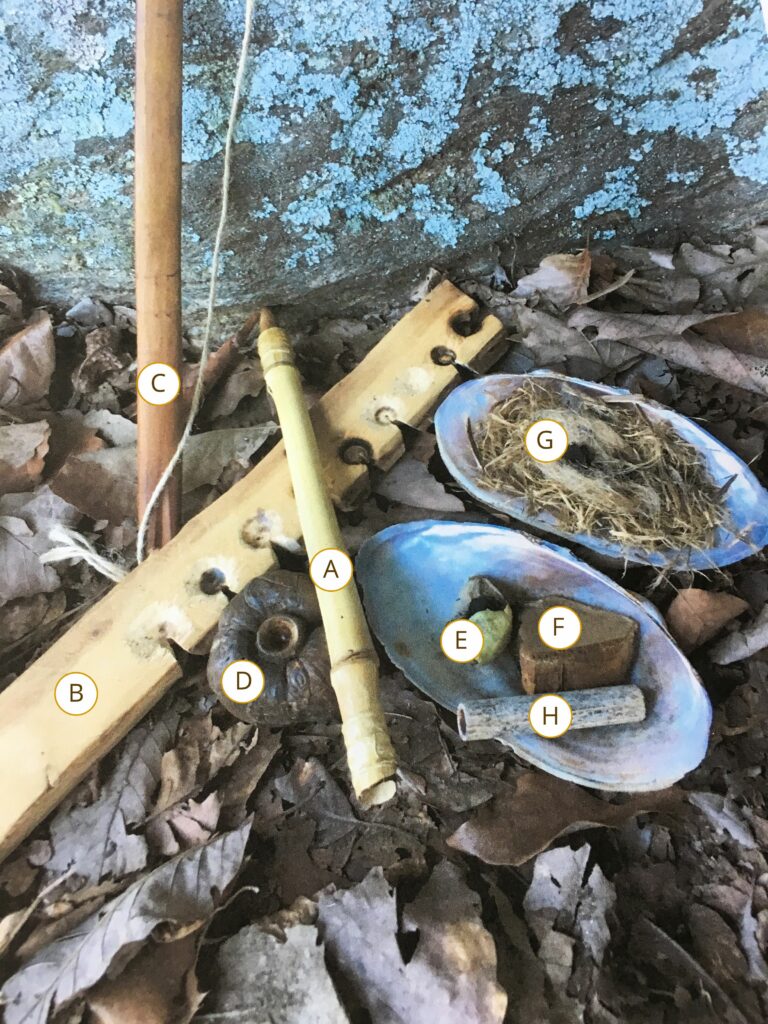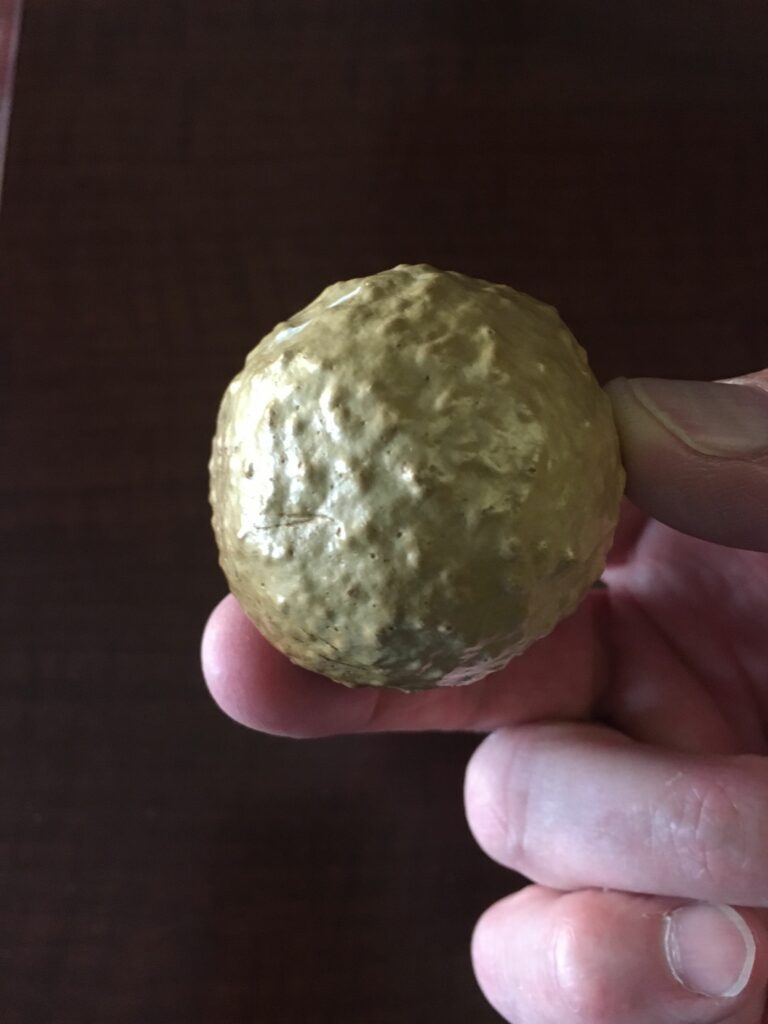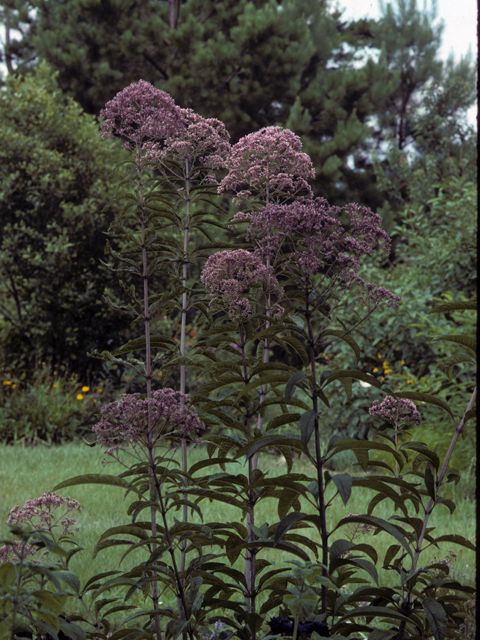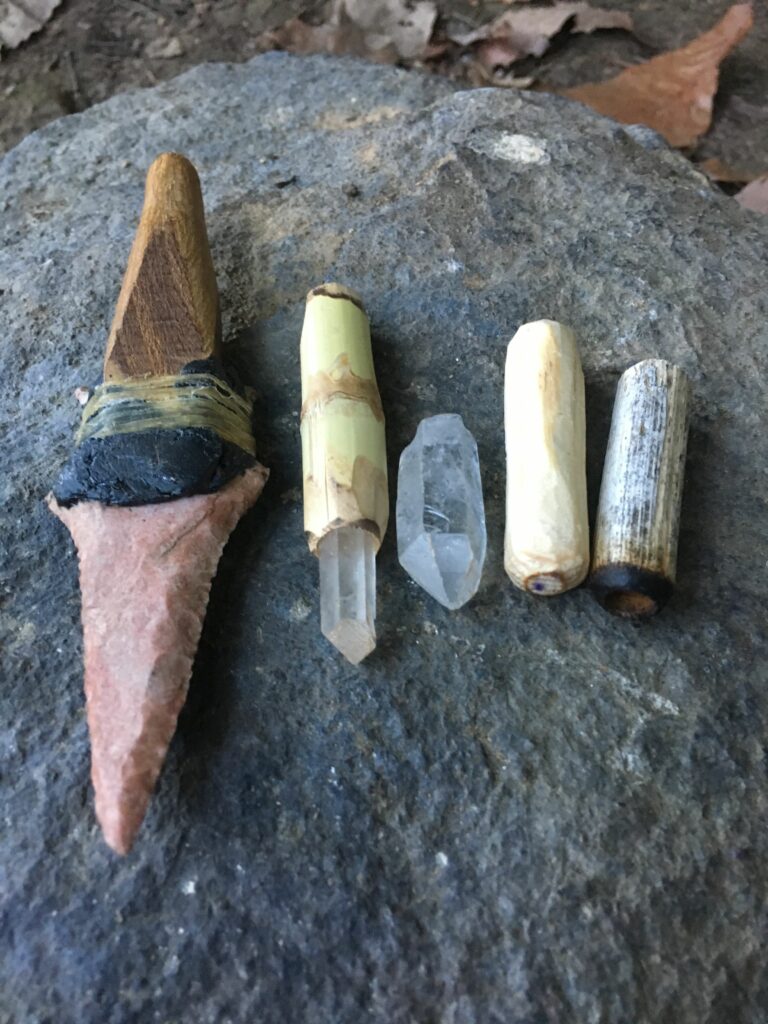By: Trent Clayton
This bow drill kit is more advanced than a basic fire starting kit. It features a “Socketed Spindle” which allows for both fire making and drilling into stone, bone, shell, or wood. A multi-functional tool- It works much like a modern day drill as the bits can be changed out.

The Socketed Bow Drill Kit includes:
A. Spindle with Socket– This design is more advanced than a solid spindle and would not be used on the fly. A socket on one end allows you to change out bits. This clever little trick turns your bow drill into a multi-use tool. A river cane section approximately 9-14” long containing two nodes is selected. It helps to create a flat edge along the spindle to allow for the bow string to “bite”. The top end of the spindle has a solid hardwood dowel glued in. The dowel end is rounded off and made to fit the depression in the cap stone. The other end of the spindle is reamed out, split several times, and wrapped with deer sinew. This creates a socket which allows for changing out bits. The socketed spindle makes the kit multi-functional: Drill bits hafted to a 3-4” foreshaft can be interchanged with a Joe-Pye fire bit.
B. Fireboard– Any soft, non-resinous wood should work. Dry of course. I have had success with cedar. Willow, Basswood, and Poplar are also good choices. First, mark the spot for the edge of the hole closest to the edge of the fireboard. The distance to the edge should be the diameter of the Joe-Pye fire bit. Next, using an awl, make an indention just large enough for the bit to seat. Then “Burn a hole” using a solid wooden bit. The final step is to carve the notch. The notch will allow the hot sawdust to fall into a pile which will in turn produce an ember. The V-notch should protrude about a 1/3 or less into the hole. The sides of the V-cut should flange downward so as to allow the sawdust to easily fall from the burn hole and into a pile. If the notch isn’t cut correctly, the sawdust will not easily collect into a pile and will cool and no ember will be formed.

C. Bow- Any type of sturdy, curved wood branch can be used for a bow. A “cubit” is probably one of the oldest units of measurement. It is the distance from the armpit to the fingertips. I normally start with this length and then shorten as needed. The bow string can be made from a boot lace, or a section of parachute cord. A more authentic approach would be to use sinew or natural fiber formed into a cord. The string should be loose enough to allow for wrapping around the spindle.
D. Cap Stone–The cap stone is held in the palm of the hand. It allows for pressure to be applied to the spindle. It doesn’t have to be made from stone. In this exercise, I used a burl from the branch of a fallen pine tree. “Fusiform Rust” is the result of a Cedar tree cross pollinating with a Pine tree. It is important to lubricate the capstone since you are not trying to create friction here. The spindle should spin freely. Many modern day survival knives have a depression built into one face of the handle to serve as a cap stone.

E. Oak Apple Gall-(coal extender). This catches and cradles the ember while extending its size. The coal extender dramatically increases your chances of success. I was lucky enough to have read an article in a Primitive Technology Bulletin that explained the importance of this extra step. Treat it as an additional item in your kit. The oak apple gall is a round growth 1”-2” diameter and found on Oak trees. They are formed when a female wasp lays an egg in a developing leaf bud. A paper-like ball forms around the larvae. The cotton-like substance from several galls can be rolled up and placed back inside a half shell gall and used for a coal extender. The Oak Apple Gall method works best in the Fall season.
F. Cracked Cap Polypore – (coal extender). A more reliable coal extender is Cracked Cap Polypore Shelf Fungus (Phellinus rimosus). It grows on dying or stressed Black Locust trees. The underside of the fungus can be shaved into thin pieces and used to catch and extend an ember. A less authentic coal extender is to prepare char-cloth by cooking pieces of 100% cotton in a tin can.
G. Tender Bundle- Finely shredded strands of cedar bark or any fine, dry, organic material can be used
H. Fire Bit- After years of experimenting with different woods for making a fire by friction kit, Roger Lindsay of Pickens County, SC shared a secret with me. He showed me how Joe-Pye weed can be used for producing an ember. Joe-Pye weed, or “Eutrochium fistulosum”, is a purple flowering member of the sunflower family and is common in Georgia as well as all of the Eastern US. It grows along roadside ditches and in marshy areas where one would find “cattail” growing

This particular variety is a hollow center weed that can grow up to 11’ tall. The larger stalks can be reamed out and made into blow guns. For fire starting, stalks approximately ½” diameter can be harvested, dried and cut to 3 inch “fire bits” to fit into a spindle socket. They are twice as effective as any solid spindle I’ve experimented with.

Photos by Stacy Kopp
REFERENCES:
-Primitive Technology-A Book of Earth Skills
from the Society of Primitive Technology
Edited By David Wescott
-Wikipedia. Joe-Pye Weed photo
COMING SOON:
The Bow Drill
Socketed Spindle
Part 2: Drilling